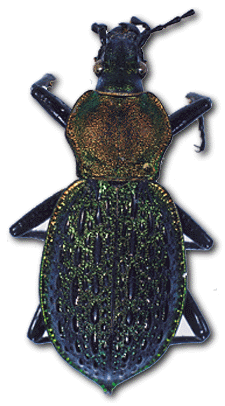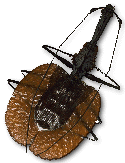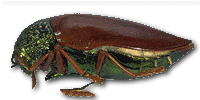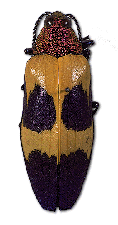Main Menu · Search · Current Issue · Contact · Archives · Centennial · Letters to the Editor · FAQs
![]()
Main Menu · Search · Current Issue · Contact · Archives · Centennial · Letters to the Editor · FAQs


Of the roughly 1,820,000 known "higher" plants and animals, 57 percent are insects, and nearly half of those are beetles, says Brian Farrell, curator of entomology and assistant professor of biology at the Museum of Comparative Zoology (MCZ). Estimates of the number of unknown-that is to say, as yet undescribed by scientists-creatures on earth range from 3 million to 100 million. Almost all of them are insects; thus, some 50 million species of beetles may be underfoot or in the treetops. One cannot write about beetles without citing a remark of British biologist J.B.S. Haldane. When asked what he could infer about the Creator from a study of His works, Haldane replied, "An inordinate fondness for beetles."

Harvard has 7 million insects over on Oxford Street, of which half are beetles. The beetle collection is much esteemed by experts because of the "type specimens" it contains. A type specimen is the chosen individual on which the examining scientist bases the description of a new species. These preeminent coleoptera, the definitions of their kind, are numerous at Harvard, yet with them in the ranks of drawers are many beetles undescribed, of unnamed species.

The iridescent ground beetle at left (the largest), fortunately only about 1 1/2 inches long in reality, is a species in the genus Carabus, from China. This is a large, cosmopolitan group that has been around for 40 to 50 million years at least. They eat other bugs and are often introduced to control pests in agricultural settings. "Like most beetles," says Stefan Cover, curatorial assistant at the MCZ, "it's a little Sherman tank with feet." The ghost walker or banjo beetle moseying into the page (right hand side, 2nd from the top) is Mormolyce phyllodes, from Sumatra. It is three inches long and flat, an adaptation to life under shelf fungi and the loose bark of dead trees, where it, too, dines on bugs. 
The vertical character, lower right, about two inches long, is a species of Cataxantha, and the beetle that looks like a chile pepper (horizontal, at left), 1 1/2 inches long, is a species of Sternocera. Both specimens are from India and both are Buprestids, metallic-colored "jewel beetles." They feed on pollen and nectar and lay their eggs on trees, into which their larvae bore. In tropical countries, members of this family are sometimes worn as living jewelry or suspended alive on threads over baby bassinets.
Main Menu · Search · Current Issue · Contact · Archives · Centennial · Letters to the Editor · FAQs
![]()
Harvard Magazine · 7 Ware Street · Cambridge, MA 02138 · Phone (617) 495-5746